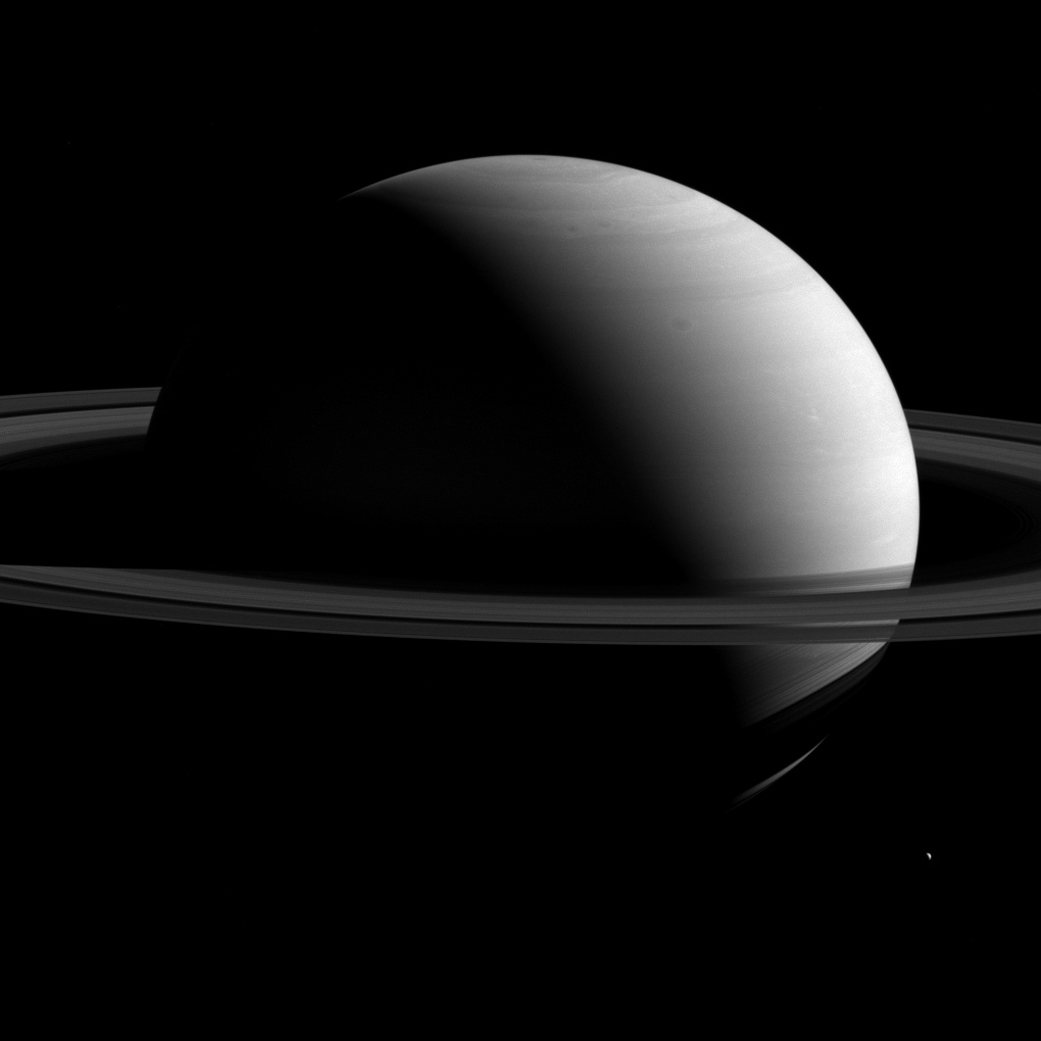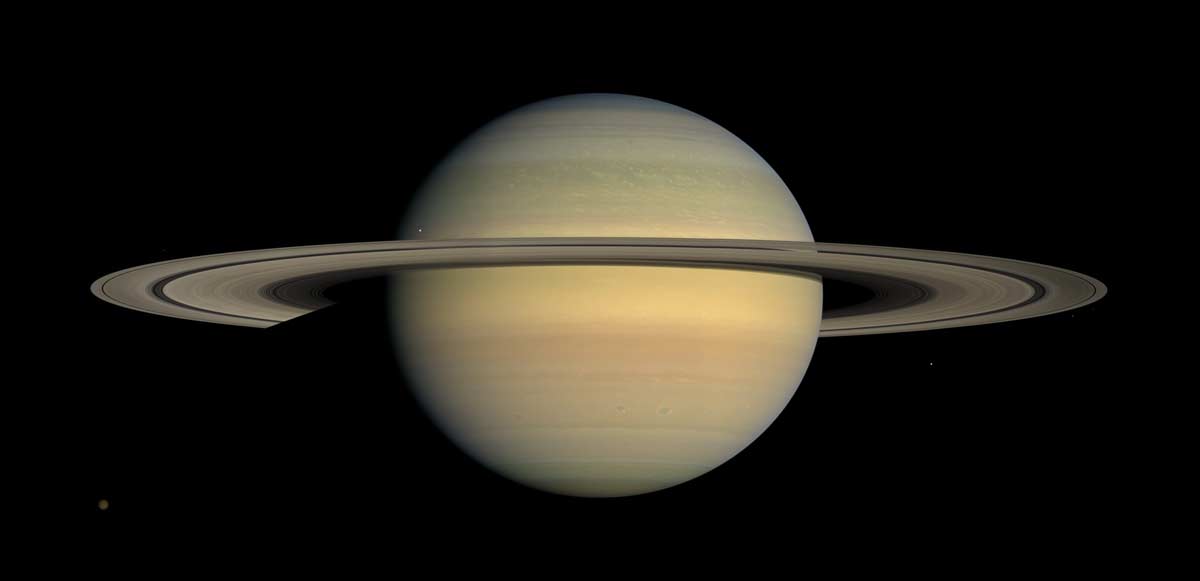
An amazing new photo serves as a reminder of just how big Saturn is.
The beautiful ringed planet looms over its moon Tethys, reducing the 660-mile-wide (1,062 kilometers) satellite to a tiny dot in the new image, which was captured by NASA's Cassini spacecraft in March 2015 but just released today (Jan. 11).
"The view was acquired at a distance of approximately 1.6 million miles (2.6 million km) from Saturn. Image scale is 10 miles (16 km) per pixel," NASA officials wrote in a description of the photo. "Tethys is slightly closer at 1.5 million miles (2.4 million km) away, for an image scale of 9 miles (km) per pixel."
Saturn's diameter is about 72,400 miles (116,500 km), making the gas giant more than 9 times wider than Earth. In fact, 763 Earths could fit inside Saturn — but the ringed planet is just 95 times more massive than Earth, because Saturn is composed primarily of gas, whereas Earth is a rocky world.

Tethys is the fifth-largest of Saturn's 62 known moons; only Titan, Rhea, Iapetus and Dione are bigger. Tethys is an icy, heavily cratered world with two dramatic surface features: a 280-mile-wide (450 km) impact basin called Odysseus, which is nearly half as wide as the satellite itself; and a canyon called Ithaca Chasma that's 1,240 miles (2,000 km) long and, in places, 62 miles (100 km) across.
The $3.2 billion Cassini-Huygens mission — a joint project involving NASA, the European Space Agency and the Italian Space Agency — launched in October 1997 and reached the Saturn system in July 2004. The Cassini mothership carried a lander called Huygens, which successfully touched down on the surface of Saturn's huge moon Titan in January 2005.
The Cassini orbiter will continue studying the ringed planet and its many moons through September 2017, when its mission will end with an intentional death dive into Saturn's thick atmosphere. This measure will be taken to ensure that the spacecraft doesn't contaminate Titan or the icy moon Enceladus, two Saturn satellites that could potentially host life.
Get the Space.com Newsletter
Breaking space news, the latest updates on rocket launches, skywatching events and more!
Follow Mike Wall on Twitter @michaeldwall and Google+. Follow us @Spacedotcom, Facebook or Google+. Originally published on Space.com.
Join our Space Forums to keep talking space on the latest missions, night sky and more! And if you have a news tip, correction or comment, let us know at: community@space.com.

Michael Wall is a Senior Space Writer with Space.com and joined the team in 2010. He primarily covers exoplanets, spaceflight and military space, but has been known to dabble in the space art beat. His book about the search for alien life, "Out There," was published on Nov. 13, 2018. Before becoming a science writer, Michael worked as a herpetologist and wildlife biologist. He has a Ph.D. in evolutionary biology from the University of Sydney, Australia, a bachelor's degree from the University of Arizona, and a graduate certificate in science writing from the University of California, Santa Cruz. To find out what his latest project is, you can follow Michael on Twitter.









